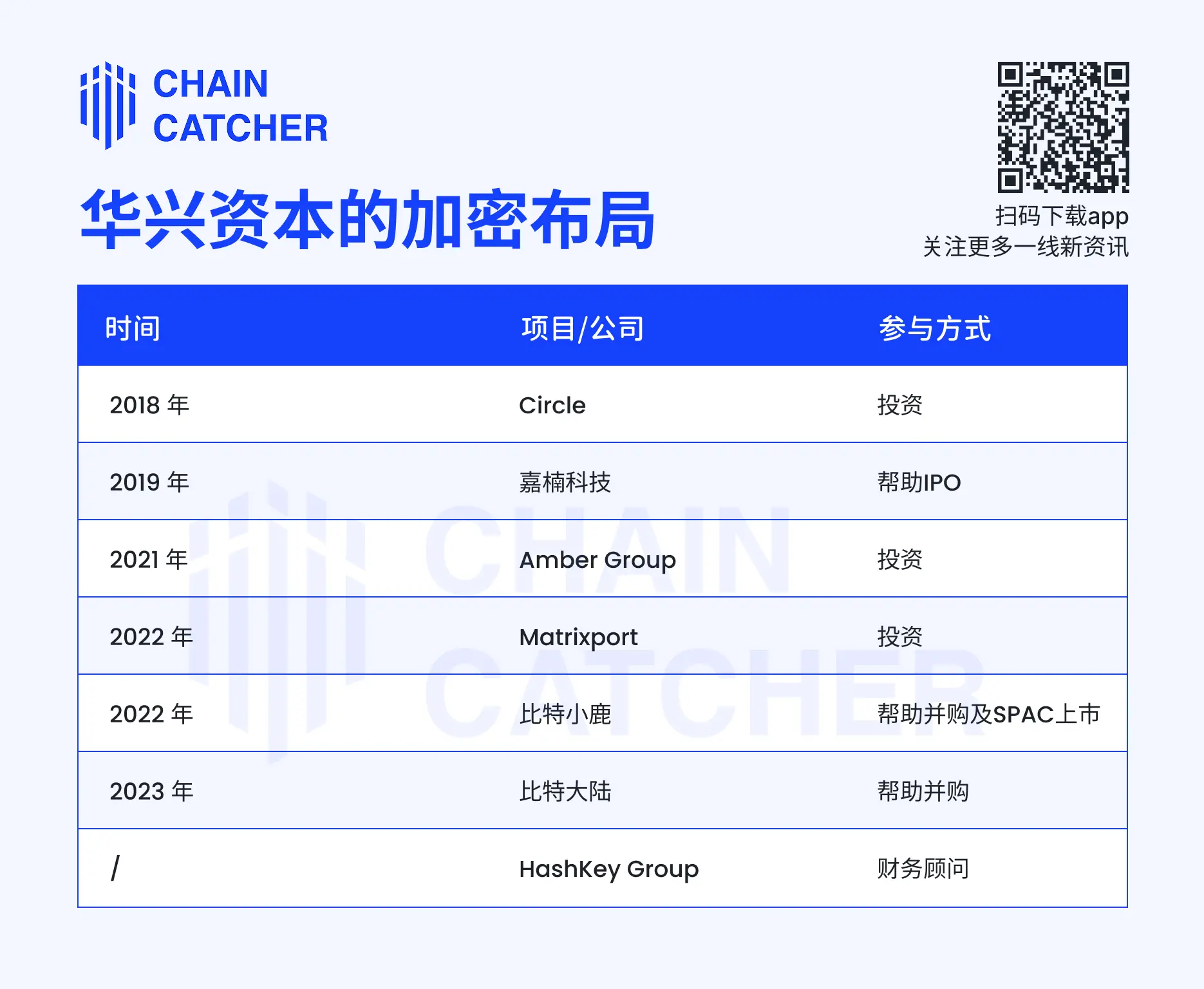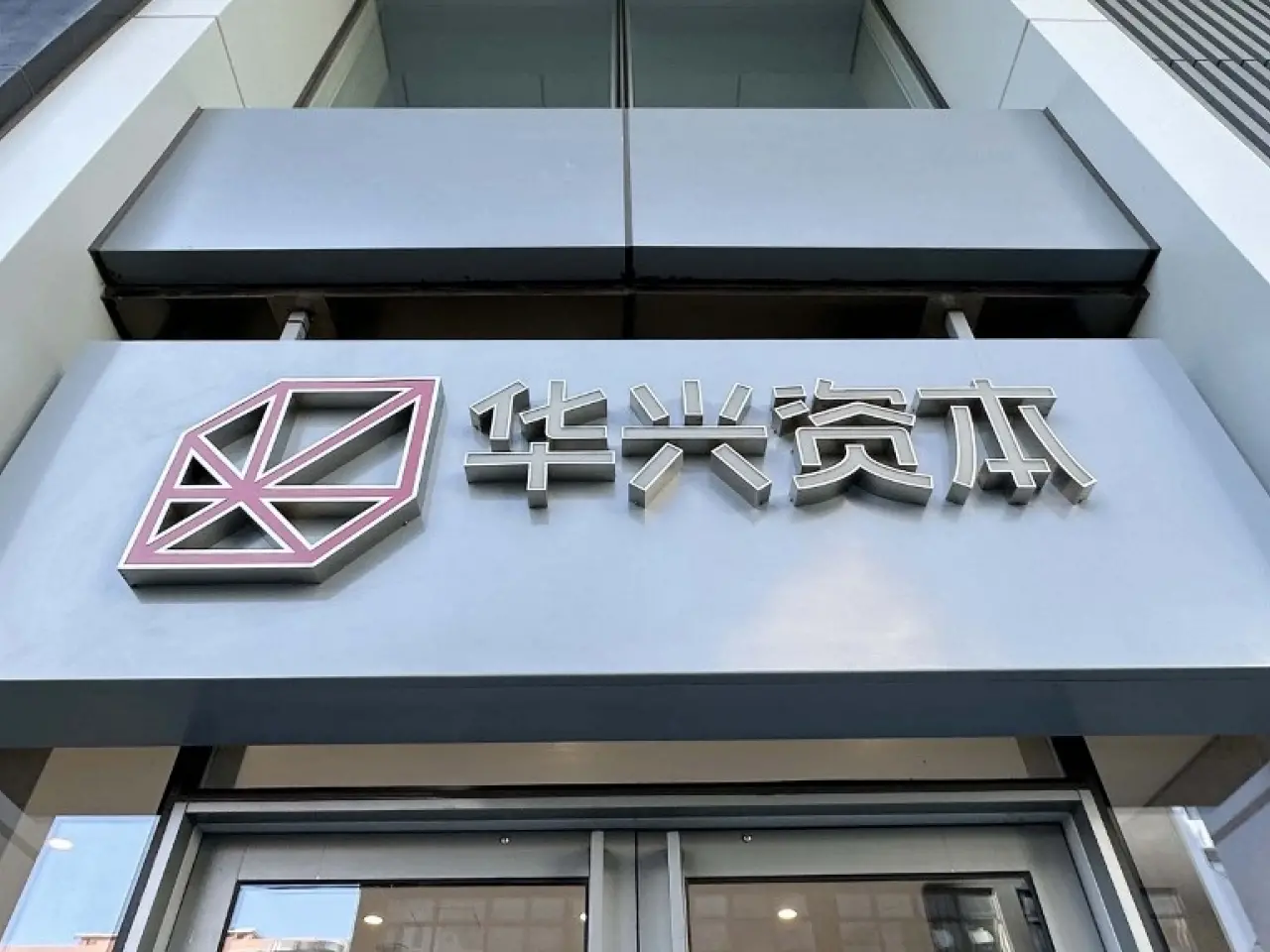Author: Fairy, ChainCatcher
Editor: TB, ChainCatcher
The king of mergers and acquisitions in Web2 is trying to become a player in Web3.
Huaxing Capital, which has led epoch-making mergers such as Didi Kuaidi, Meituan Dianping, and 58 Ganji, has officially turned its attention to the crypto world. Yesterday, the board of directors of Huaxing Capital Holdings formally passed a strategic resolution to invest $100 million over the next two years for the expansion of its Web3 business and direct investments in crypto assets.
Stimulated by this news, Huaxing Capital Holdings saw a surge of 33% in its stock price today. This investment bank, which once influenced the landscape during the Web2 era, is now attempting to reposition itself in a new round of financial paradigm shifts. Web2 was orchestrated into a "situation" by Huaxing; will Web3 be redrawn by them?

Doubling Down on Web3, Huaxing is Not a "New Player"
As one of the earliest and most knowledgeable local investment banks in China's new economy, Huaxing Capital has long been at the forefront of restructuring China's internet industry. Since its establishment in 2005, it has been deeply involved in almost all key mergers and strategic transactions during the rise of China's new economy, including the acquisition of Tantan by Momo and Tencent's strategic investment in JD.com. In the primary market, Huaxing has become a "behind-the-scenes driver" for many giants through its dual-driven model of "investment banking + investment."
Although Huaxing is making a high-profile entry into Web3 through a board resolution, in fact, its layout in the crypto world has quietly unfolded over the years, spanning multiple fields such as mining companies, stablecoins, and trading platforms.
As early as 2018, its managed Huaxing New Economy Fund invested in Circle. In 2019, Huaxing assisted Canaan Creative in going public in the U.S., making it the first blockchain mining machine company to list on NASDAQ.
In 2021, Huaxing invested in the crypto financial service provider Amber Group through its subsidiary fund, which later completed a merger and went public in the U.S., with a valuation that once exceeded $3 billion, becoming one of Asia's most well-known crypto unicorns.
In 2022, Huaxing Capital completed its investment in Matrixport and assisted its affiliated company Bitdeer in completing the merger and SPAC listing process, clearing the way for its entry into the U.S. stock market.
In 2023, Huaxing helped Bitmain complete a merger. At the same time, Huaxing Securities (Hong Kong) served as the financial advisor for Hashkey Group, deeply participating in multiple rounds of financing for the company.

From IPO planning, equity investment, to mergers and acquisitions and financing advisory, Huaxing Capital has precisely embedded itself into the crypto ecosystem with its traditional investment banking capabilities and localized network.
After the Baofan Incident, Huaxing is Transforming
At the beginning of 2023, the "disappearance" of Huaxing Capital's founder Baofan shocked the entire capital market and pushed this giant to the forefront of controversy. However, even before Baofan's "disappearance," Huaxing Capital's performance had already shown a significant decline. In the first half of 2022, revenue plummeted by 40% year-on-year, with a net loss of up to $23 million, while the company was still in a profit state of $179 million in the same period the previous year.
After experiencing the dual blows of a leadership vacuum and capital volatility, Huaxing was forced to hit the brakes on expansion and began to reassess the group's core positioning. On February 2, 2024, Baofan officially resigned from all positions, including executive director, chairman of the board, and CEO. The company is now led by a new management team, attempting to "de-Baofan" and proposing the "Huaxing 2.0" strategy, focusing on hard technology, industrial upgrading, and globalization, while downplaying the traditional consumer internet label.
Under this transformation strategy, Web3 and crypto assets began to enter Huaxing's core vision. On June 5 of this year, the stablecoin issuer Circle successfully went public, with its stock price soaring to nearly $300 at one point. As an investor that bet on Circle in 2018, Huaxing also welcomed returns from this "long-term bet," with its stock price soaring over 16% as a result.
Perhaps it was this long-awaited capital "linkage" that gave Huaxing more confidence to double down on Web3. Shortly thereafter, the company's board formally passed a resolution to establish a special budget of $100 million to enter the Web3 and crypto asset fields, focusing on stablecoins, RWA, and the cryptocurrency ecosystem, while simultaneously advancing the application and upgrade of related business licenses.
At this time, Hong Kong is experiencing a warming of policies and a gradual improvement of the licensing system. Hong Kong-listed companies are accelerating their crypto layouts: the fintech company IDA is applying for a stablecoin license, Guotai Junan International has been approved to provide virtual asset trading services, and companies like Hong Kong BGE Limited have also obtained virtual asset trading platform licenses. Amid the policy tailwind and the quiet recovery of the industry cycle, Huaxing has once again found the right entry point.

Huaxing has used capital operations to facilitate the rise of a generation of giants and has also reshaped the industrial landscape with strategic vision. Its mature approach and deep resources made it invincible in the Web2 era, but will all of this still be effective in Web3?
Regardless, it is leaving its mark in the new crypto landscape.
免责声明:本文章仅代表作者个人观点,不代表本平台的立场和观点。本文章仅供信息分享,不构成对任何人的任何投资建议。用户与作者之间的任何争议,与本平台无关。如网页中刊载的文章或图片涉及侵权,请提供相关的权利证明和身份证明发送邮件到support@aicoin.com,本平台相关工作人员将会进行核查。




